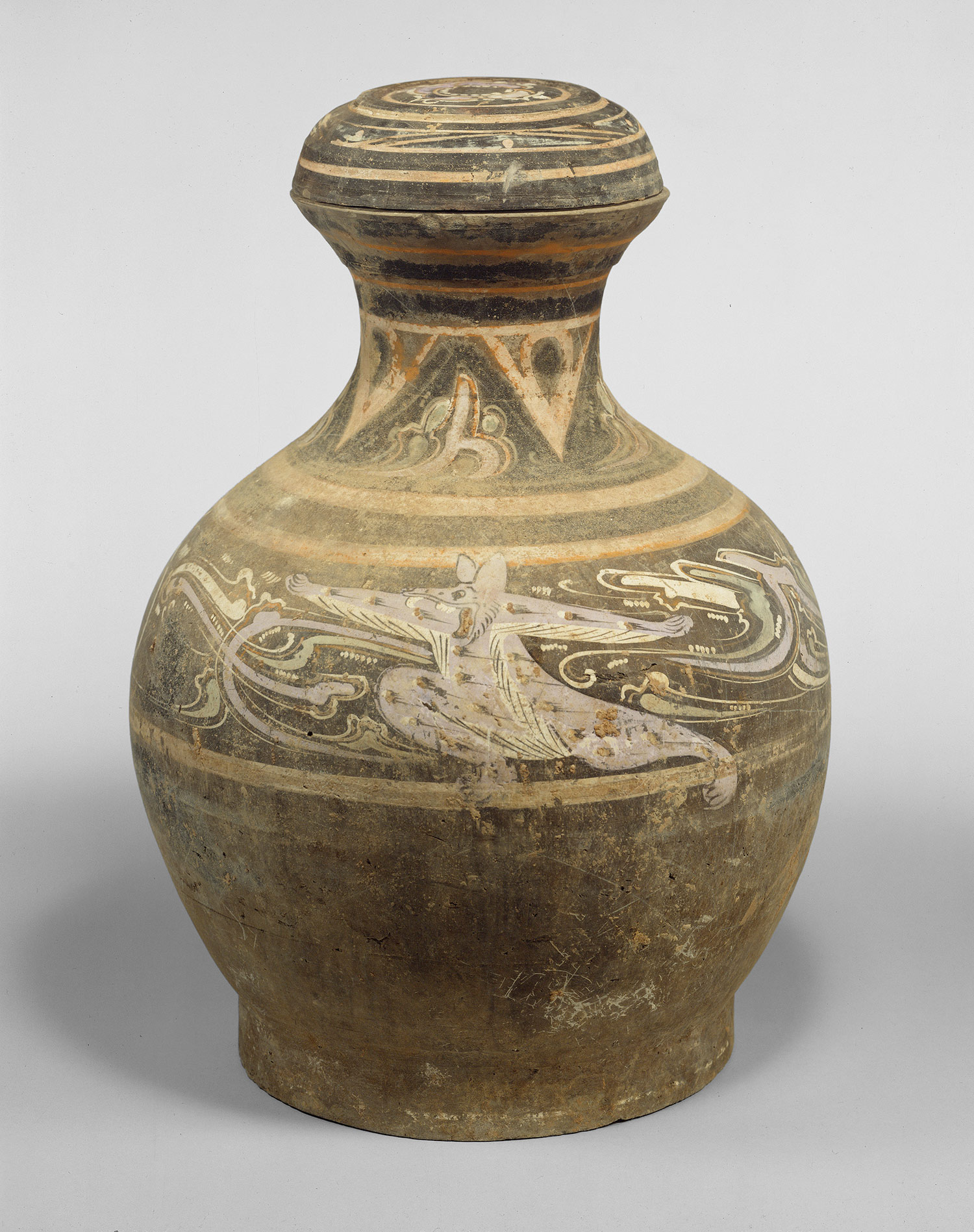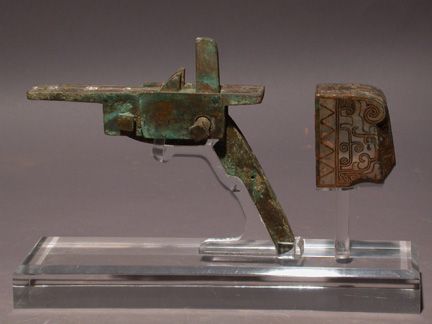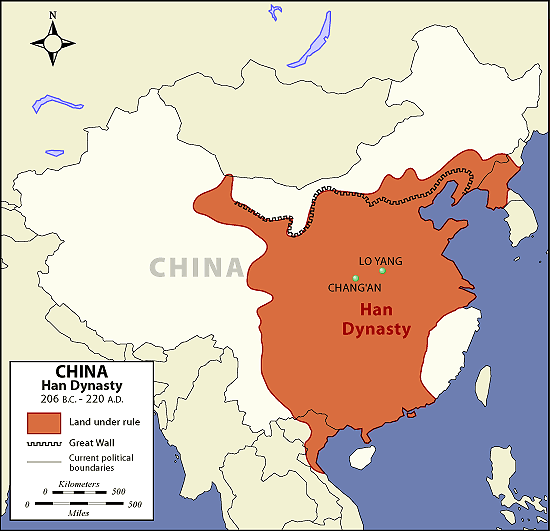Emily's Han Dynasty Blog
Thursday, April 25, 2013
Works Cited
"Contributions: Chinese Inventions."Ancient Chinese. 4/25/2013. <http://www.wjcc.k12.va.us/djm/Ancient_Civilizations/china/contributions.htm> .
"History of Silk Road." TravelGuide.com. 4/25/2013. <http://www.travelchinaguide.com/silk- road/history/>.
"Invention of Paper." History of China. 4/25/2013.< http://www.history-of-china.com/han-dynasty/invention-of-paper.html >.
"Silk Road in Western Han Dynasty." Travel China Guide. 4/25/2013. <http://www.travelchinaguide.com/silk-road/history/western-han.htm>.
Szczepanski, Kallie."Invention of Paper." About.com. 4/25/2013. <http://asianhistory.about.com/od/chineseinventions/p/Invention-of-Paper.htm>.
Worden, Robert L."Geography." China. 1987. 4/25/2013. <http://countrystudies.us/china/32.htm>.
Picture Collage
 |
| Department of Asian Art. "Han Dynasty (206 B.C.–220
A.D.)". In Heilbrunn Timeline of Art
History. New York: The Metropolitan Museum of Art, 2000–.
http://www.metmuseum.org/toah/hd/hand/hd_hand.htm (October 2000) This picture shows the remains of a covered jar from the Luoyang area in about the 2nd- 1st century B.C.  "Emperor Guangwu of Han." evi. 4/25/2013. <http://www.evi.com>. Emperor Guangwu was one of the many inteligent leaders of the Han Dynasty that was born in Liu Ziu.  "Han Dynasty Military." Totally History. 4/25/2013. <http://totallyhistory.com>. A gun from the ancient Han Dynasty is pictured above and gives modern day scientists and idea of what life was like during that time.  "Han Dynasty Bronze Cattle Farming." Xin Blog. 12/23/2011. 4/25/2013. <http://xinjingrushui.com> This picture shows how the Han Dynasty took care of farming and agriculture. |
Opinion/Editorial
By: Emily D, Staff Writer
Is the Silk Road helping the Han Dynasty grow?
Is the Silk Road helping the Han Dynasty grow?
The Silk Road is a trade route that was created during the ruling of the Han Dynasty to allow its merchants to trade with people from around the word. The route spread to the west from China all the way to imperial Rome, making it the longest trade route of the ancient world (http://www.wjcc.k12.va.us/djm/Ancient_Civilizations/china/contributions.htm). It gets its name from the numerous silk exports from China that were in high demand from Rome. The Silk Road helped the Han Dynasty in many ways including allowing them to spread their culture and making it easier to get allies in times of deperate need. When unique goods from China were traded with other countries, their ideas and beliefs would influence other countries beliefs. "This ancient route not only circulated goods, but also exchanged the splendid cultures of China, India, Persia, Arabia, Greek and Rome"(http://www.travelchinaguide.com/silk-road/history/). All around the ancient world, many different cultures were able to spread and mix amongst the other civilizations from trading on the Silk Road. Countries that have never seen each other could share their ideas and goods that could influence laws and beliefs. The Silk Road helped The Han Dynasty by making it possible for its empire to share its religion and culture with civilizations around the world.
Another way the Silk Road helped the Han Dynasty was by making it easier to find allies during times of need. Since the Han traded with neighboring empires it already had good relations with the people around them. Whenever there was a war or natural disaster there were always allies that would come to their aid when they needed it. "By this time, the Western Regions were overawed by the Han Empire; many states sent envoys to Chang'an along the Silk Road to pay tribute in succession"(http://www.travelchinaguide.com/silk-road/history/western-han.htm). The Han Dynasty had many allies from trading, when there were invasions the other states stood by them until it was over. If it were not for the Silk Road the Han Dynasty would be cut off from the other empires and would not be able to prosper. The Silk Road benefited the Han Dynasty by allowing it to spread its culture and make allies easily.
The Creation Of Paper
By:Emily D, Staff Writer
This month, Cai Lun has created the inovation of paper. Citizens will now be able to use paper in their everyday life to record important data and even just for entertainment. For the past years, many of China's people have been using turtle shells, animal bones, golden stone, bamboo slips, and wood to write down their thoughts (http://www.history-of-china.com/han-dynasty/invention-of-paper.html). Our dynasty has had many difficulties getting these resources which has made writing less common. The animal bones were rarely found and the stone was too heavy to transport over the country. Also, good cloth was far to pricey and bamboo and wood took up too much space. Therefore the new paper product will increase writing in the dynasty and increase trading oppurtunities.
In order to make paper, there are many steps involoved. First, the paper- makers took hemp fibers and soaked them for many hours. Next, the wet fibers were pounded using a wooden mallet and poured into a specific mold made of wooven cloth. The horizontal mold is suspended over a piece of bamboo which allows the excess water to slowly drain out of the mold (http://asianhistory.about.com/od/chineseinventions/p/Invention-of-Paper.htm>.). The final product that reamins in the mold is a dry piece of thin hemp paper that is ready for use. Paper-makers were considering experimenting with different materials to improve their paper including bamboo and tree barks along with dyes in order to make colored paper.
In order to make paper, there are many steps involoved. First, the paper- makers took hemp fibers and soaked them for many hours. Next, the wet fibers were pounded using a wooden mallet and poured into a specific mold made of wooven cloth. The horizontal mold is suspended over a piece of bamboo which allows the excess water to slowly drain out of the mold (http://asianhistory.about.com/od/chineseinventions/p/Invention-of-Paper.htm>.). The final product that reamins in the mold is a dry piece of thin hemp paper that is ready for use. Paper-makers were considering experimenting with different materials to improve their paper including bamboo and tree barks along with dyes in order to make colored paper.
Thursday, April 11, 2013

http://www.artsmia.org/art-of-asia/history/han-dynasty-map.cfm
The Han dynasty was a major empire that lasted over 400 years. It was located around the capital called Chang'an in eastern China (http://countrystudies.us/china/32.htm). Eastern China, also known as China Proper, is in the lowlands close to the islands and oceans. There are four major rivers that flow through this area including the Wei River, Yangtze River, Xi River and the Yellow River. In this region there are fertile lowlands, foothills, mountains, deserts, and subtropical areas (http://countrystudies.us/china/32.htm). Since the eastern part of China is located near many rivers and oceans it was easy for the Han dynasty to grow crops and trade their goods with neighboring empires. The mountains to the east also provided protection from enemies and intruders. China's geography had many advantages and disadvantages which greatly impacted the history of the Han dynasty.
Subscribe to:
Posts (Atom)
